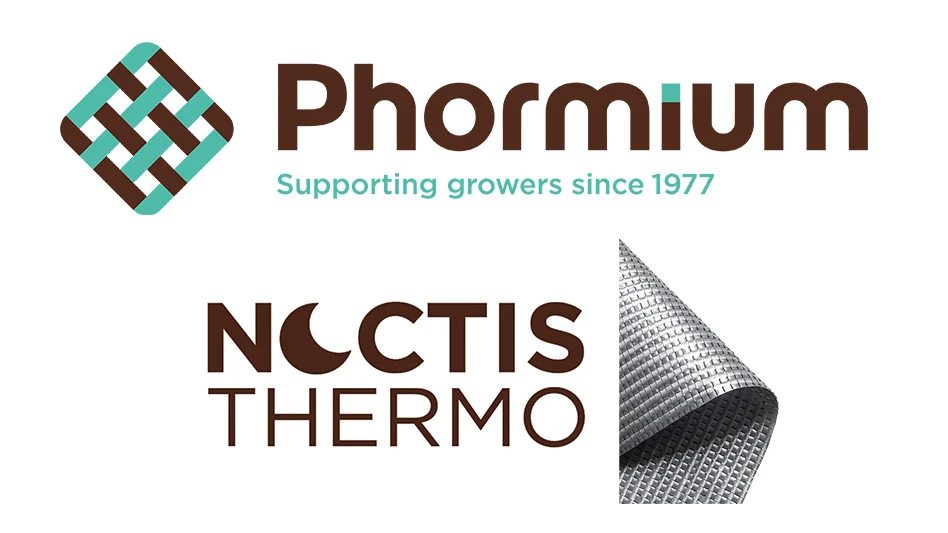

Supplemental and photoperiod lighting and indoor artificial/sole-source lighting have become something of a standard practice for growers. We’ve seen that trend in our own biennial State of Lighting reports. Nowhere is that trend more evident than in the core questions we ask our respondents: Does your location use supplemental/artificial lighting in its production of crops under cover?
When we asked that question in 2018, 62% said they were not using supplemental lighting of any kind, while 38% had invested in adding lighting to their operation. Six years later, the same question yielded results that were completely inverted. This year, more than twice as many operations than 2018 reported using supplemental lighting, representing 75% of respondents. On the other hand, the percentage of those who were not using supplemental lighting halved over that same period to just 24% of respondents.
“In the last few years, we have definitely seen many growers switch over to LEDs. The technology has been around long enough now that the prices have come down and growers have seen their peers install LEDs and have success. They see the benefits,” says Roberto Lopez, associate professor of floriculture and controlled environment production at Michigan State University. “Those that have switched from HPS to LEDs comment most on the energy savings.”
Given that the state of lighting has changed so much over the years, it only makes sense that the focus of this report shifts as well. Instead of focusing on if or when greenhouse managers are going to install lighting, we’re zeroing in on the type of lighting they’re choosing and why. And the results are illuminating.

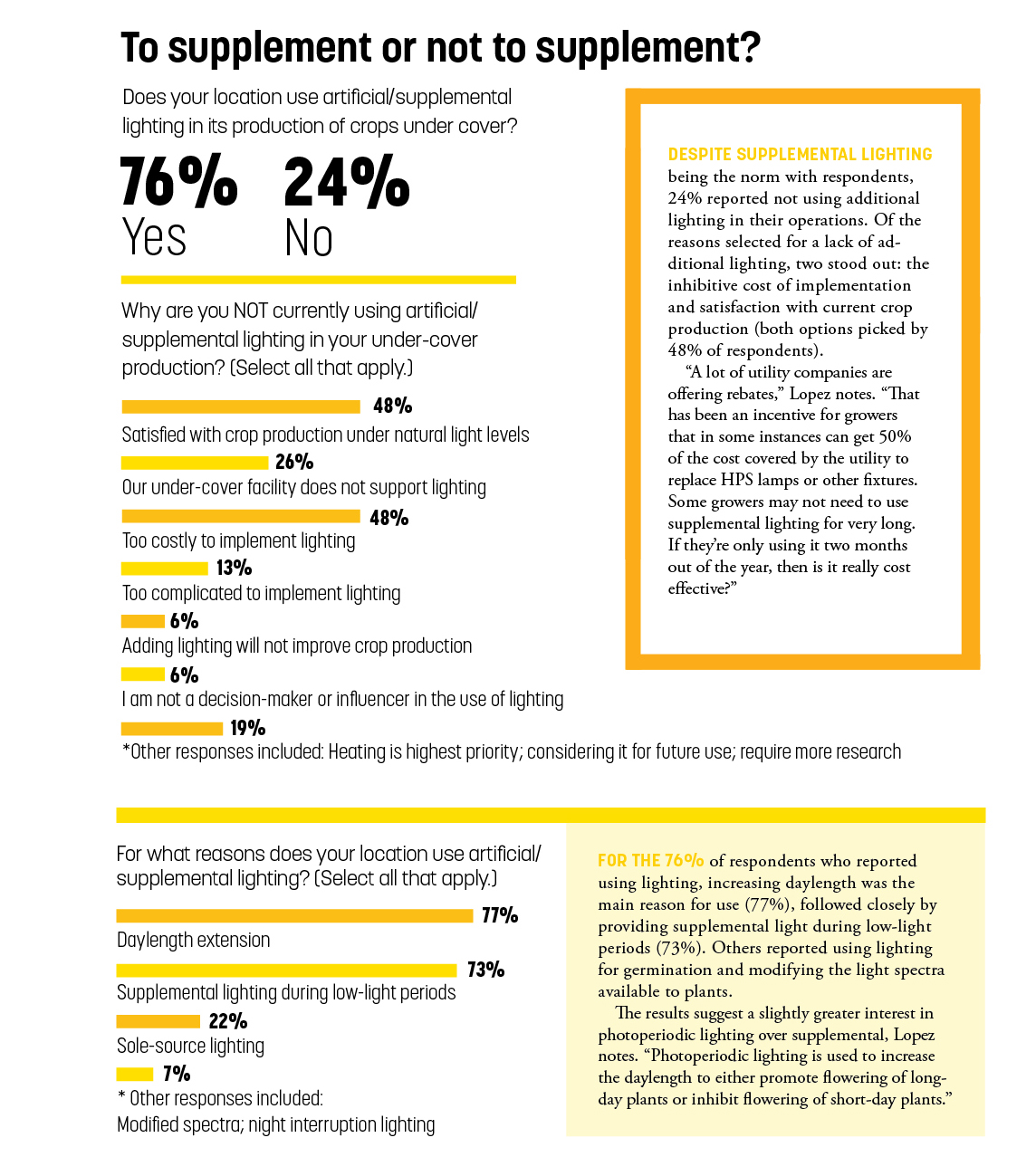
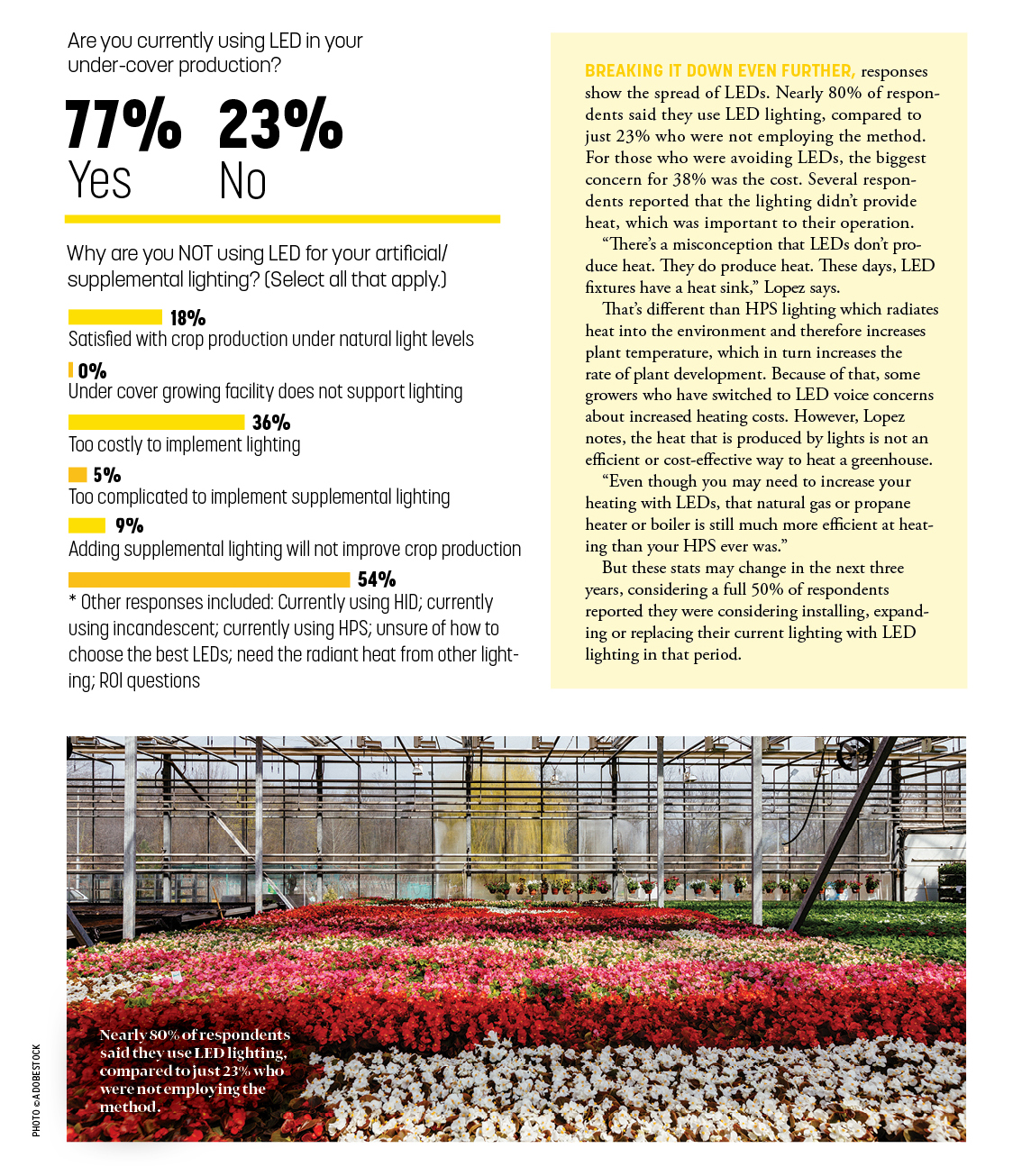
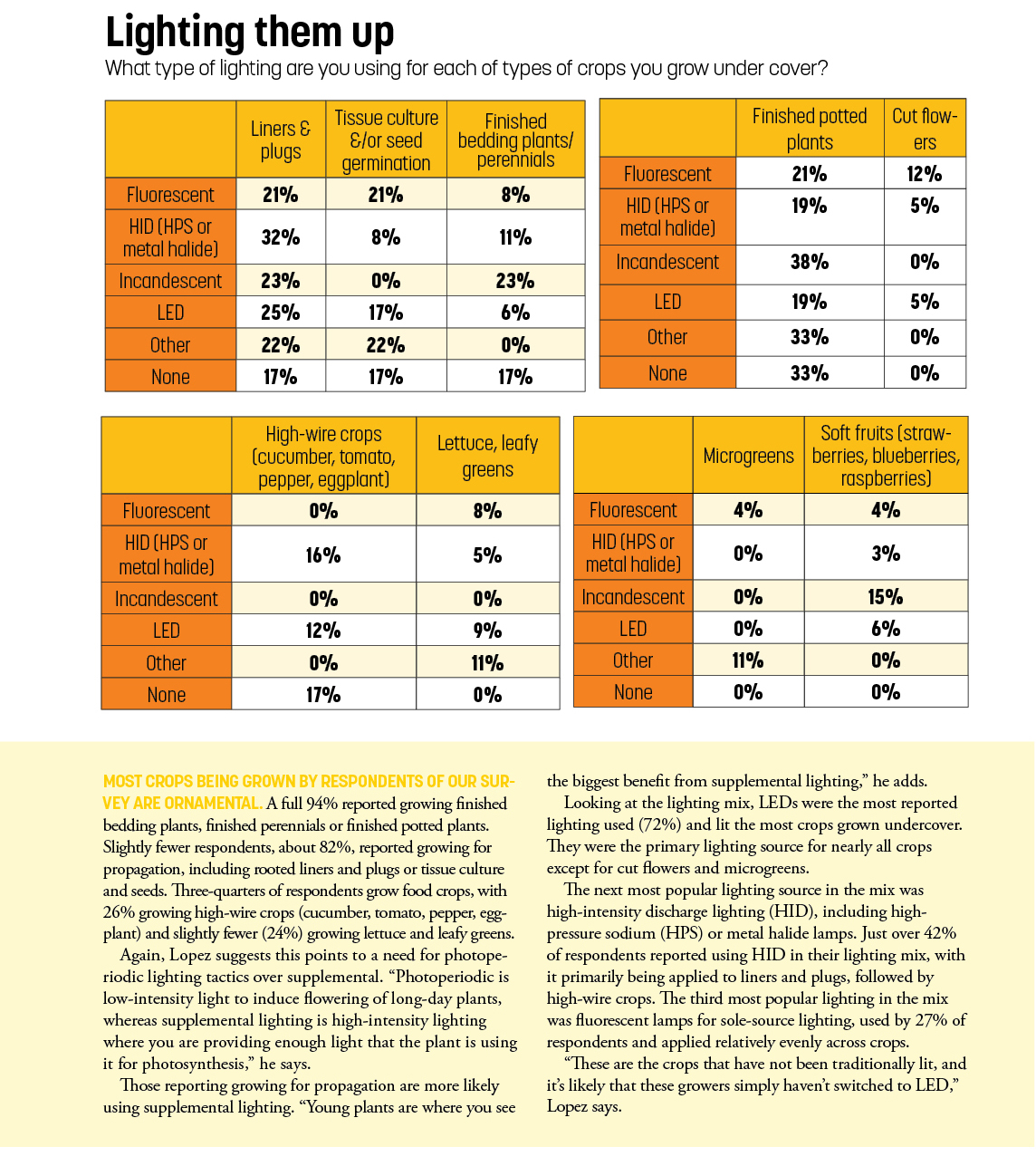
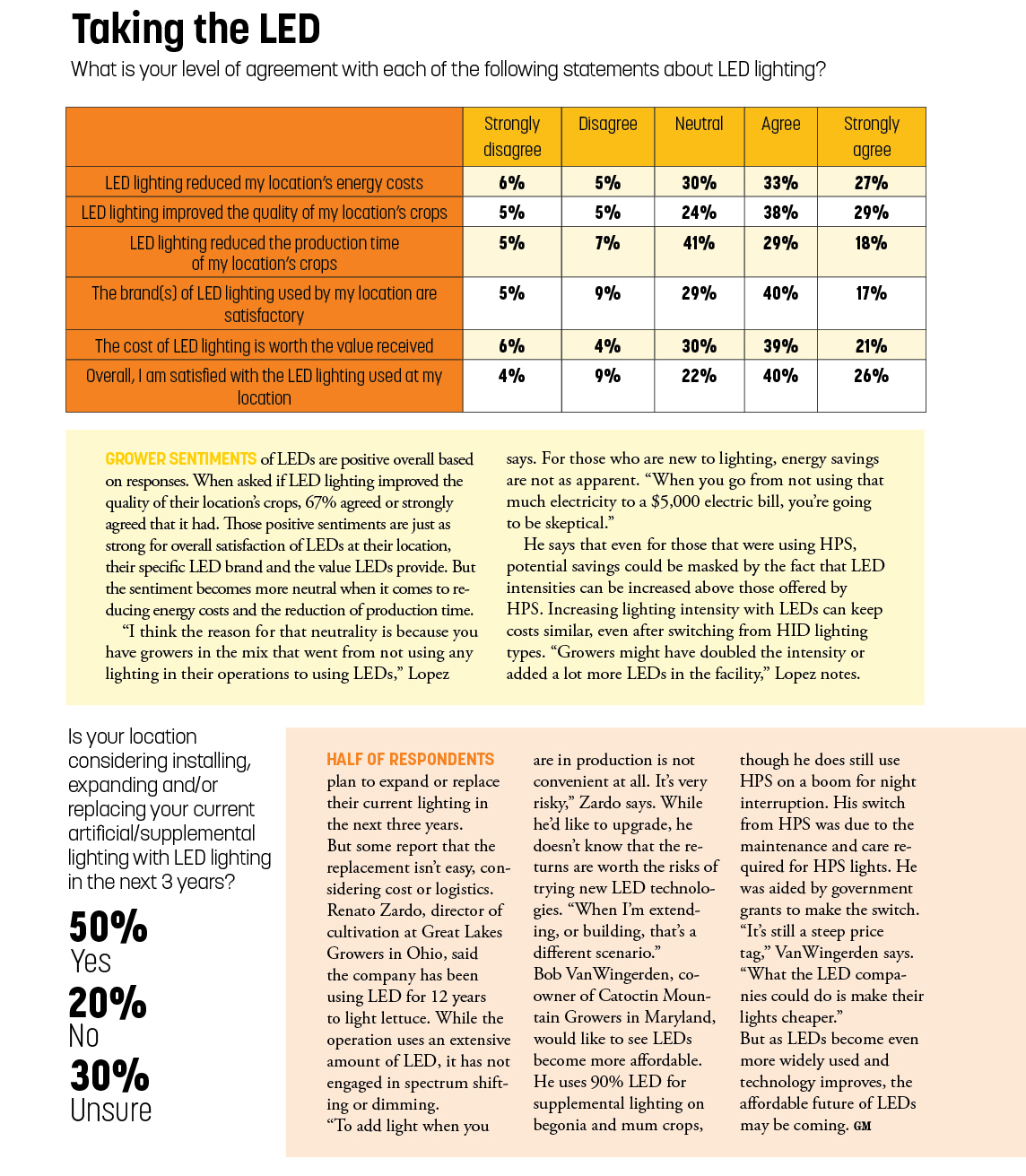
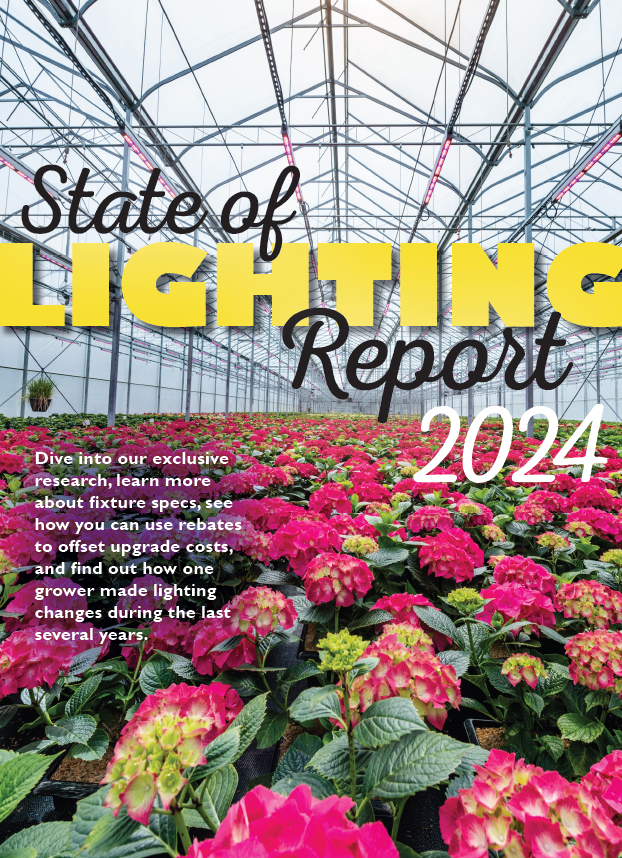

Explore the June 2024 Issue
Check out more from this issue and find your next story to read.
Latest from Greenhouse Management
- This month's Greenhouse Management magazine is about native plants and sustainability
- The HC Companies, Classic Home & Garden merge as Growscape
- Terra Nova releases new echinacea variety, 'Fringe Festival'
- Eason Horticultural Resources will now officially be known as EHR
- BioWorks receives EPA approval for new biological insecticide for thrips, aphids, whiteflies
- ScottsMiracle-Gro transfers cannabis subsidiary to focus on core lawn and garden business
- Should we start calling natives 'eco-beneficial plants'?
- Ellen Mackenbach-Lakeman appointed new CEO of Dümmen Orange



